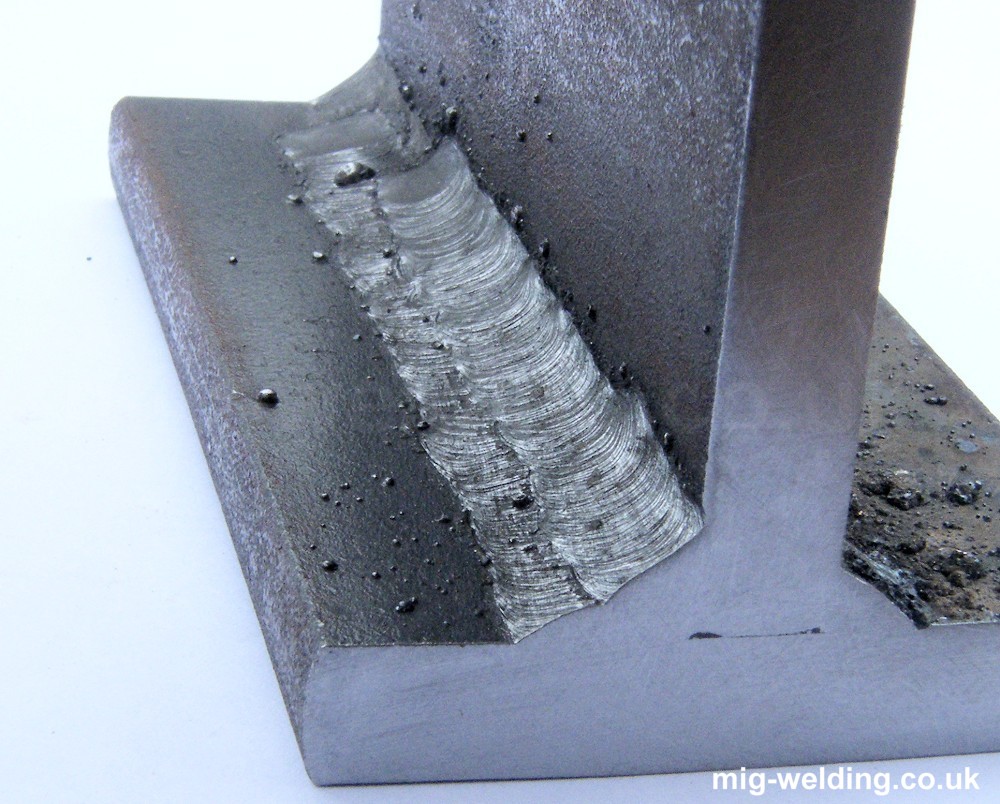Your Total Handbook to Preventing Weld Undercut Like a Pro
Your Total Handbook to Preventing Weld Undercut Like a Pro
Blog Article
Recognizing the Causes and Solutions for Undercut Welding in Steel Fabrication Procedures
In the realm of metal manufacture processes, the event of undercut welding positions a substantial difficulty that requires an extensive understanding of its causes and sensible solutions. The complex interplay of various factors throughout welding operations can cause this unwanted phenomenon, impacting the structural integrity and general top quality of the bonded joints - Preventing weld undercut. By exploring the origin of undercut welding and checking out reliable remedial measures, makers can boost the standard of their handiwork and make certain the production of remarkable steel components
Typical Reasons For Undercut Welding
Often neglected in steel construction, undercut welding occurs due to different factors that demand careful attention and proficiency to be successfully alleviated. One usual root cause of undercut welding is excessive warmth input. When the heat input is as well high, it can bring about the melting and subsequent erosion of the base material along the sides of the weld joint, producing a groove or undercut. Additionally, improper welding techniques, such as making use of the wrong welding angle or travel rate, can also contribute to undercut development. Inadequate securing gas insurance coverage is an additional vital factor that can result in damaging. Insufficient gas insurance coverage stops working to protect the weld pool appropriately, leading to oxidation and undercut problems. Furthermore, the choice of welding criteria, such as voltage, existing, and cable feed rate, plays a substantial role in the occurrence of undercut welding. Recognizing these usual causes is essential for applying safety nets and guaranteeing premium welds in metal construction procedures.
Influence of Incorrect Welding Parameters
Inaccurate welding criteria can significantly jeopardize the stability and high quality of welded joints in metal fabrication procedures. The impact of incorrect welding parameters manifests in numerous ways, leading to architectural weaknesses and flaws in the welded parts. Careful interest to welding parameters is vital to ensure the production of top notch welds with the desired mechanical residential properties and structural integrity.
Impact of Improper Lantern Angle
Inappropriate torch angle in welding procedures can significantly impact the top quality and stability of the final weld joints in metal manufacture processes. Damaging is a typical welding defect where a groove forms along the weld toe, weakening the joint and endangering its architectural stability.
A torch angle that is too high can result in not enough infiltration, incomplete blend, and boosted spatter. On the various other hand, a lantern angle that is also superficial can result in excessive infiltration, burn-through, and distortion of the base product. Preventing weld undercut. Appropriate lantern angle is crucial for making sure regular weld top quality, strength, and look
To avoid damaging and other issues triggered by improper torch angles, welders have to be educated to maintain the appropriate torch angle throughout the welding procedure. Regular tracking and modification of torch angles throughout welding can aid attain audio try this out welds with marginal issues.
Duty of Inadequate Welding Methods

One more element of poor welding strategies is improper weld prep work. Poor cleaning of the base steels, inaccurate joint layout, or insufficient side preparation can all add to damage welding. Additionally, insufficient securing gas insurance coverage or making use of the incorrect sort of gas can lead to incomplete combination and the formation of undercut issues.
To address the role of insufficient welding techniques in metal manufacture procedures, it is crucial to supply comprehensive training for welders. Appropriate education and learning on welding criteria, joint preparation, and protecting gas see this site option can assist avoid undercut welding and ensure high-quality welds in steel construction projects.
Efficient Solutions for Undercut Welding
Resolving undercut welding in metal manufacture requires applying efficient solutions to boost weld quality and architectural integrity. Among the key solutions to combat undercut is to readjust welding specifications such as voltage, current, and take a trip speed to make certain appropriate warmth input and fusion. By fine-tuning these settings, welders can avoid excessive melting of the base steel and filler material, minimizing the chance of undercut formation.
In addition, appropriate joint prep work is critical in protecting against undercut. Ensuring clean base steel surface areas devoid of pollutants and utilizing the ideal bevel angle can assist promote better weld penetration and decrease the danger of undercut - Preventing weld undercut. Using suitable welding techniques, such as weaving or oscillating the torch, can likewise aid in dispersing heat evenly and filling up the weld joint appropriately, reducing the opportunity of undercut flaws
Moreover, choosing the correct welding consumables, consisting find here of electrodes and filler steels, is important in reducing undercut. Using materials with proper chemical make-ups and mechanical buildings can contribute to accomplishing sound welds with minimal undercut. Regular examination and high quality control procedures should additionally be executed to find and address undercut issues immediately, making sure the general integrity of made steel components.

Conclusion
Finally, comprehending the causes and remedies for undercut welding in steel construction processes is critical for achieving high-grade welds. By addressing typical causes such as wrong welding criteria, inappropriate lantern angle, and inadequate welding techniques, welders can prevent undercutting and ensure strong, resilient welds. It is vital to focus on these elements and implement reliable remedies to boost the general welding process and final product quality.

Report this page